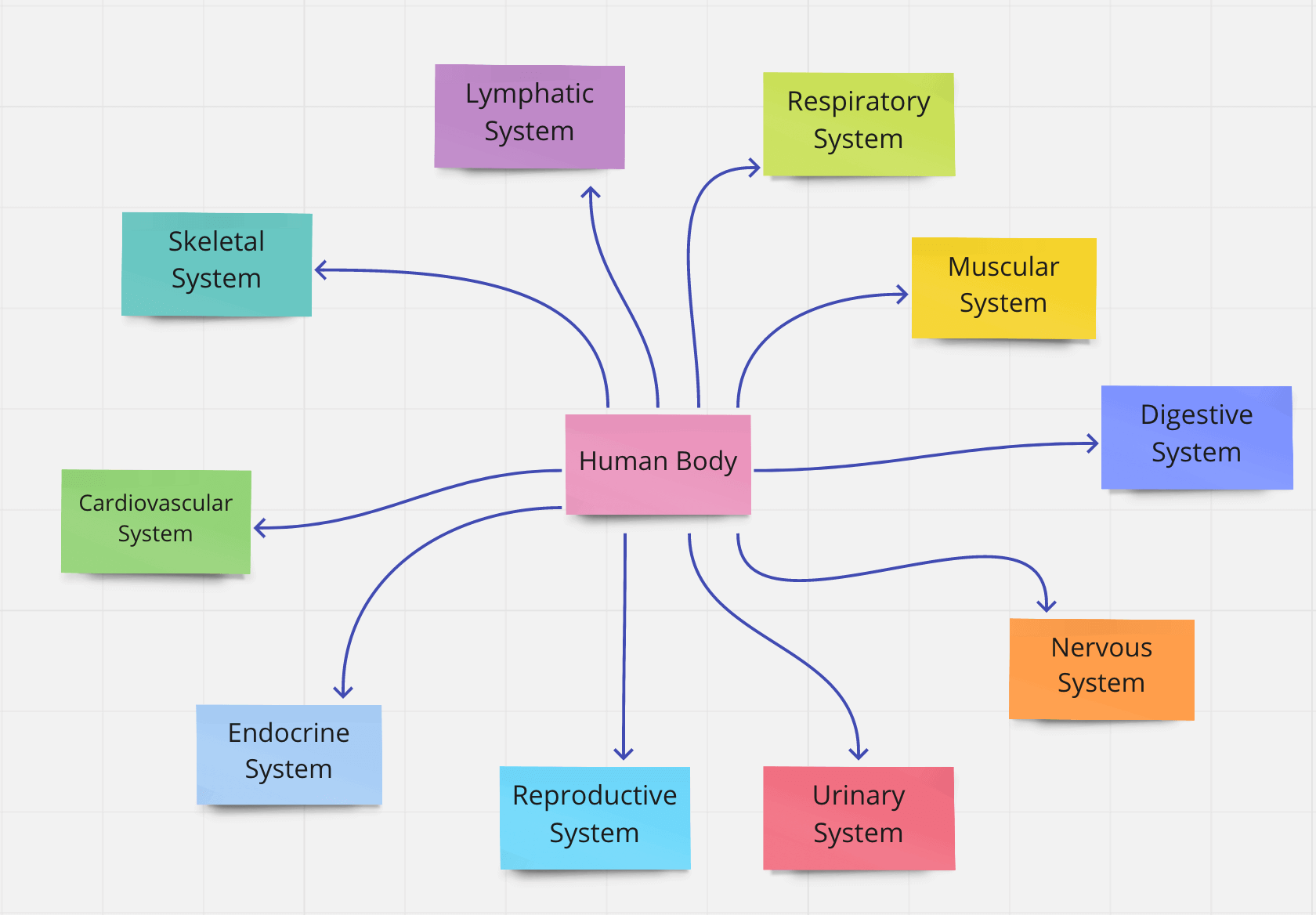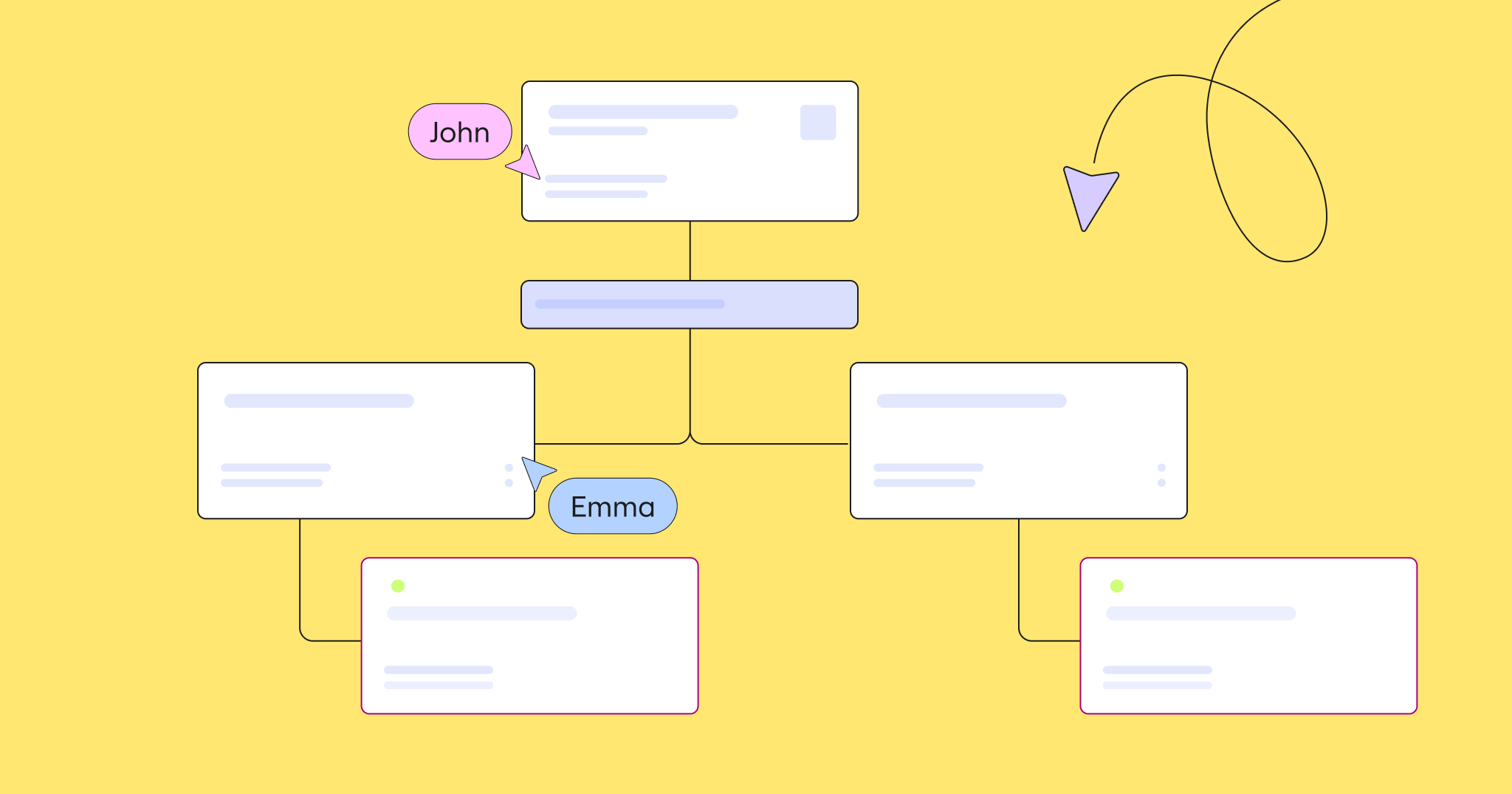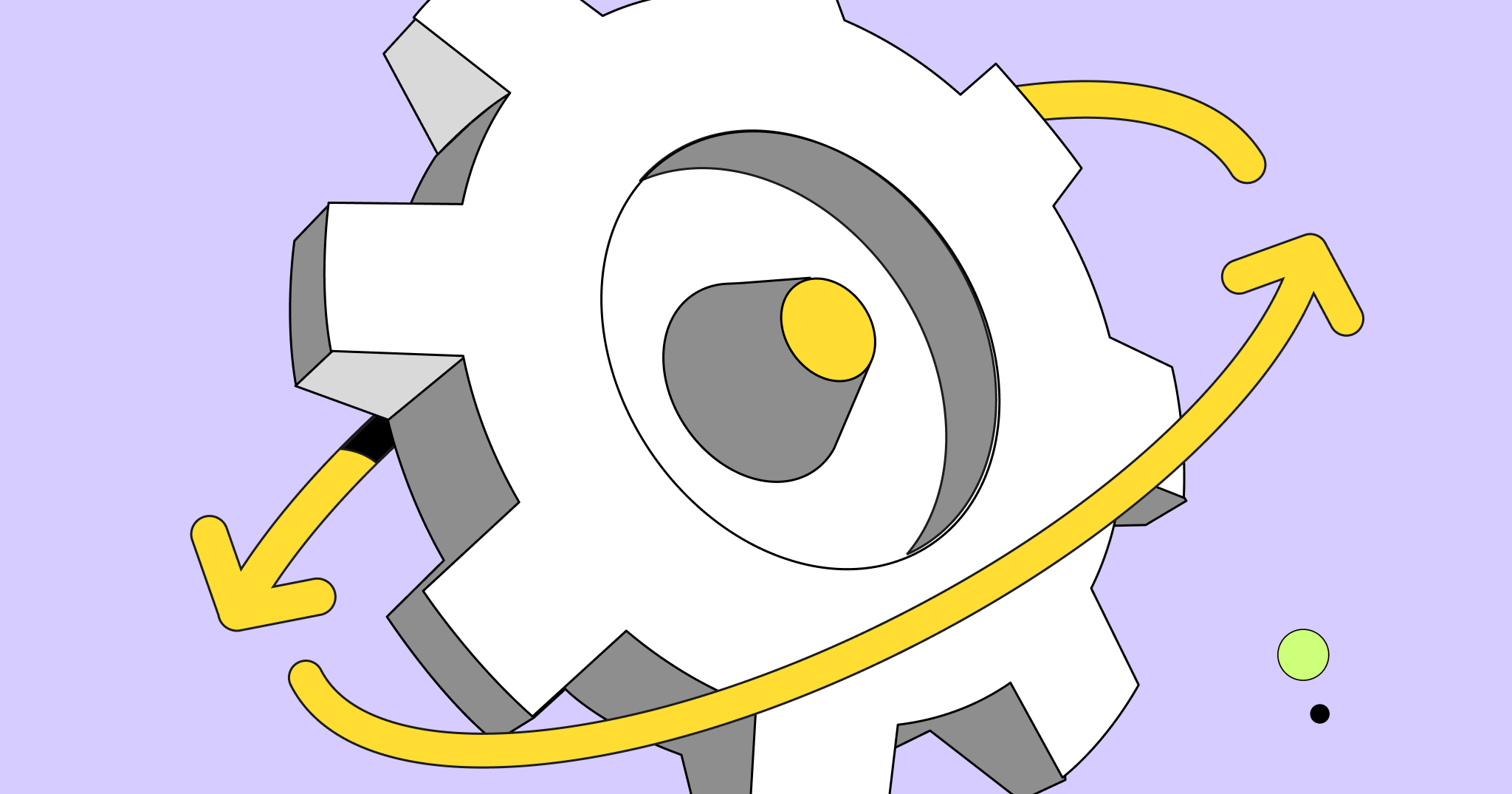Imagine that you’re exploring a new idea — maybe it’s something that your boss is presenting in a team meeting or even a subject you’re learning in a college class.
Chances are, you need to take notes to document your takeaways, clarify concepts, boost your retention, and create a resource that you can refer back to later.
What does your typical note-taking process look like? If you’re like many people, you frantically scribble down important facts, statements, and questions. There’s no logical order or system — you’re just trying to record everything you hear that seems important.
Save yourself the stress and a hand cramp because there’s a better way: concept map note taking.
What is concept map note taking?
Concept map note taking (which you might also hear referred to as conceptual note taking) brings order and organization to your notes. Rather than filling pages with random and stream-of-consciousness sentences, you’ll record them in a concept map.
A concept map is a visual tool or diagram that consists of two main elements:
- Concepts: These are typically represented by circles, ovals, or boxes and are called “nodes.”
- Relationships: These are represented by arrows that connect the concepts, called “cross-links.” These arrows can include a connecting word or verb, but they don’t have to.
A concept map helps you dig deep into an idea and, more importantly, understand how different ideas connect. That makes it incredibly helpful for taking notes, as you can see the whole picture instead of individual subjects.
For example, imagine that you were taking notes in a biology or anatomy class as you learned about the human body. You might create a concept map that looks like this:
Start with Miro’s free concept map maker

As you study and reinforce your learning, you’ll continue to add arrows and concepts off of each body system. That organized diagram will be a lot more helpful than pages of messy notes, don’t you think?
Other methods for taking notes
We’re big fans of using a concept map creator for note taking to clarify complex subjects and organize your ideas. But, it’s certainly not the only way to get your notes out of your brain and down on paper.
Aside from concept maps (frequently referred to as the “mapping method” in academia), other common note-taking methods include:
Visual note-taking methods:
Much like a concept map, these methods use a diagram or visual system to organize your notes.
- Cornell Method: This uses a chart organized into three sections: the left is for cues about important information, the right is for your actual notes, and the bottom is for summaries of your notes.
- Charting Method: You’ll define categories of what you’re learning or discuss and use those as the labels on columns on your page. As you listen and learn, record your notes in the correct category columns.
Text-based note-taking methods:
Instead of using a visual tool, these note-taking methods rely strictly on text to organize facts and important statements.
- Outlining Method: You’re probably familiar with a traditional outline, and that’s what this note-taking method uses. Major topics will make up the headers of your outline, with sub-topics and related information organized below each of those headers.
- Sentence Method: Every new fact or topic gets its own line on your page. You’ll number them as you document them.
Quick tips to help you get started with conceptual note taking
Ultimately, you need to find the note-taking method that works best for you. But, if concept map note taking sounds like something that will help important information stick, here are a few tips to help you make the most of this tool:
- Leave yourself enough space: As with any note-taking approach, the last thing you want is to run out of room and have to cram your information into your margins. Concept maps can quickly expand, so make sure you have plenty of space to let your concept map continue to grow outward.
- Focus on key concepts: A concept map is all about the most important ideas and their relationships, which means not everything you hear or read will need to be placed on your map. Stay zoned in on the key concepts you’re learning. That’s wise advice for whatever note-taking method you choose, so you don’t get too lost in the weeds.
- Use an online concept map maker: An online concept map maker will save you a lot of hassles. It automatically adjusts when you move concepts around. You can continue adding to it without running out of space. You don’t have to worry about reading your own handwriting, and you can access that map on all of your devices. Get started with Miro’s free concept map template.
- Commit to trial and error: As strange as it sounds, note taking itself is a learning process. Don’t be afraid to start with concept maps and figure out what tools and techniques are the most helpful. For example, you might want to take notes in real-time using an outline or sentence method but then translate them into a concept map as you review and study that information. There isn’t one right way to take notes, and you should be willing to experiment.
Take your notes to the next level with a concept map
When it comes to successful learning, the secret sauce seems to be effective note taking. But, if you’re picturing pages and pages of hard-to-read sentence fragments and abbreviations, think again.
Concept map note taking helps you organize the information you’re learning in an engaging and helpful way. Say goodbye to tearing your hair out over jumbled notes and say hello to a visual tool that boosts your learning and retention.




